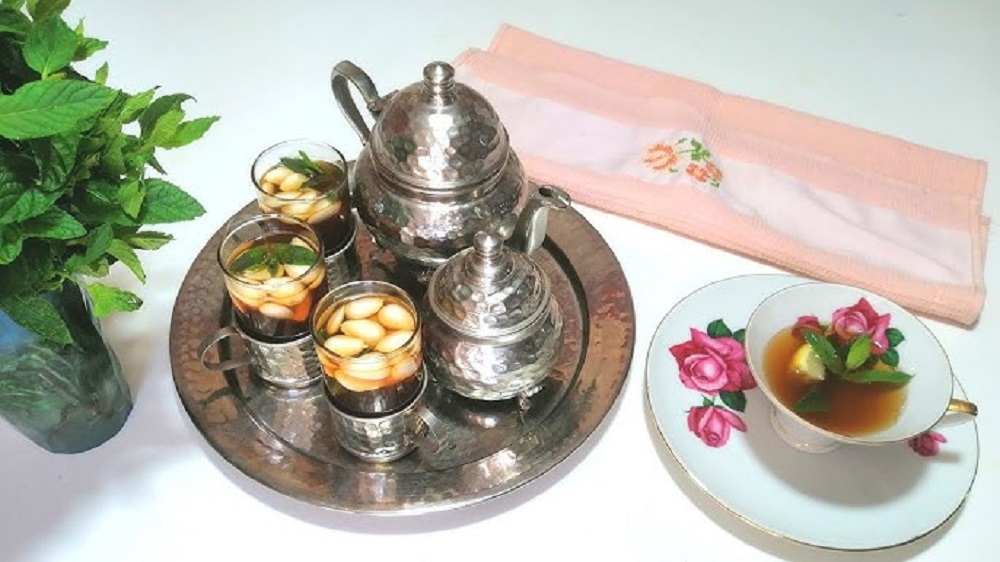Mint tea, or shai bil na’na’, is one of the most iconic beverages across the Arab world, especially in North Africa. Whether served during social gatherings, after meals, or as a welcoming gesture for guests, this sweet, aromatic tea is as much about culture and community as it is about flavor.
In countries like Morocco, Tunisia, and Algeria, mint tea is a daily essential, prepared with care and presented with pride. Each region, even each family, has its own subtle method of making it, but the essence remains the same: green tea, fresh mint leaves, generous amounts of sugar, and boiling water.
The Ingredients: Simple Yet Symbolic
Traditional mint tea uses the following core ingredients:
-
Chinese Gunpowder green tea (for its strength and bitterness)
-
Fresh spearmint leaves (na’na’)
-
Sugar – often in large quantities
-
Boiling water
In Tunisia, people often add pine nuts in the cup for a touch of elegance, while Moroccans focus on a long pour to enhance foam and flavor.
The Ritual: More Than Just a Brew
Making mint tea is often a ritual performance. In Morocco, for example, it’s common to see tea being poured from a high distance into small glasses, a gesture that symbolizes grace and hospitality. In Tunisia, the tea is often brought out on a decorated tray with pastries or nuts, especially for guests.
This ceremonial way of serving mint tea reflects values deeply rooted in Arab culture: generosity, respect, and warmth.
Health Benefits: Tradition Meets Wellness
Mint tea isn’t just culturally rich—it also brings several health benefits:
-
Digestive aid: Mint soothes the stomach and aids in digestion, which is why it’s often served after meals.
-
Hydration and refreshment: The mint leaves offer a cooling effect, especially in hot climates.
-
Mood lifting: The aromatic oils in mint can have calming, stress-reducing effects.
A Symbol of Identity
For Arab immigrants in the United States, Europe, or elsewhere, making mint tea at home serves as a touchstone to heritage. It’s a taste of home, a small ritual that connects generations and keeps culture alive.
Whether it’s served in a bustling medina in Fez or in a New York apartment, mint tea continues to be a bridge between past and present, identity and daily life.
A Cultural Brew That Transcends Time
Traditional mint tea is not just a drink. It’s a gesture of belonging, a symbol of hospitality, and a legacy passed down through generations. Every glass poured carries centuries of tradition, memories, and meaning—making it one of the most treasured elements of Arab daily life.

